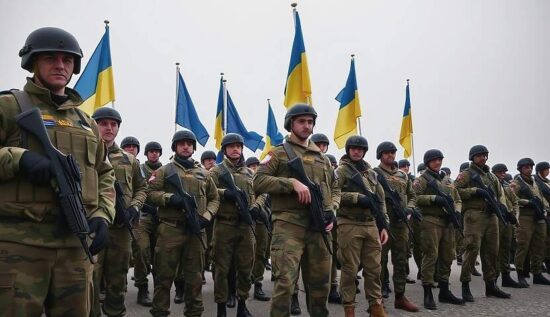The prospect of possible ceasefire negotiations has accelerated the debate among Kiev’s Western allies over the deployment of “peace troops”. The goal of this mission would be to have European soldiers, as part of the “peace troops”, secure peace and monitor a ceasefire in the region.
If an agreement is reached, Trump is likely to urge Europe to implement this initiative and take responsibility for Ukraine, reducing Washington’s involvement, according to the New York Times. The question arises over the number of “peace forces”. In late January, Ukrainian leader Volodymyr Zelensky emphasized the need for at least 200,000 European “peace soldiers” to ensure Ukraine’s sovereignty after a possible ceasefire with Russia. “200,000 is the minimum. It is the minimum, otherwise it’s pointless” he said.
Some European countries, including the Baltic states, France and the United Kingdom, have expressed the possibility of sending some of their own units. High-ranking German officials have described this idea as premature.
As long as Ukraine is not a NATO member – which seems unlikely in the years to come –, many officials and analysts consider the stationing of numerous European NATO troops in Ukraine to be reckless, the newspaper reports. Without the involvement of the US in such an operation, European troops in Ukraine would be endangered by Russia, as the US would not provide support in areas like air cover, air defense and reconnaissance. On Tuesday, US Defense Minister Pete Hegseth stated that Washington does not plan to send soldiers and that Trump has spoken out against the deployment of US troops in Ukraine.
Ukrainian President Volodymyr Zelensky has hinted that he is willing to engage in talks over a ceasefire agreement if his allies provide security guarantees. However, the number of soldiers Zelensky demands is almost three times the size of the entire British Army, so analysts consider its implementation as nearly impossible.
European countries would not be able to send the 200,000 soldiers Zelensky expects, according to a high European official. Europe would not even be able to provide 40,000 men, as it lacks the necessary soldiers and would need to increase its defense spending. And such a number would probably not be enough to ensure deterrence against Russia, the newspaper writes. Deterrence troops typically require over 100,000 soldiers for regular rotations and emergencies.
Moreover, every deployment on the ground would need to be supported by the US, particularly when it comes to the world’s second-largest nuclear power, Russia. Otherwise, the “peace troops” would be vulnerable to Russia’s efforts to undermine the NATO’s political and military credibility, the paper writes.
For this reason, Poland, which borders Ukraine, has so far rejected the idea of participating in a troop deployment. The Polish government is clear that Washington would need to be involved in such a proposal, the newspaper reports, citing experts. Therefore, Warsaw wants to wait and see what Trump will do and is calling for the US president to provide guarantees that the US would support the Europeans at the front.
Furthermore, it is unlikely that Russia would agree to the stationing of NATO troops or troops from NATO countries in Ukraine, even if they were claimed to be for the training of Ukrainian soldiers. The Russian Foreign Ministry has already stated that the deployment of NATO troops in Ukraine would lead to the conflict “escalating uncontrollably” which would be “categorically unacceptable” for Russia.





